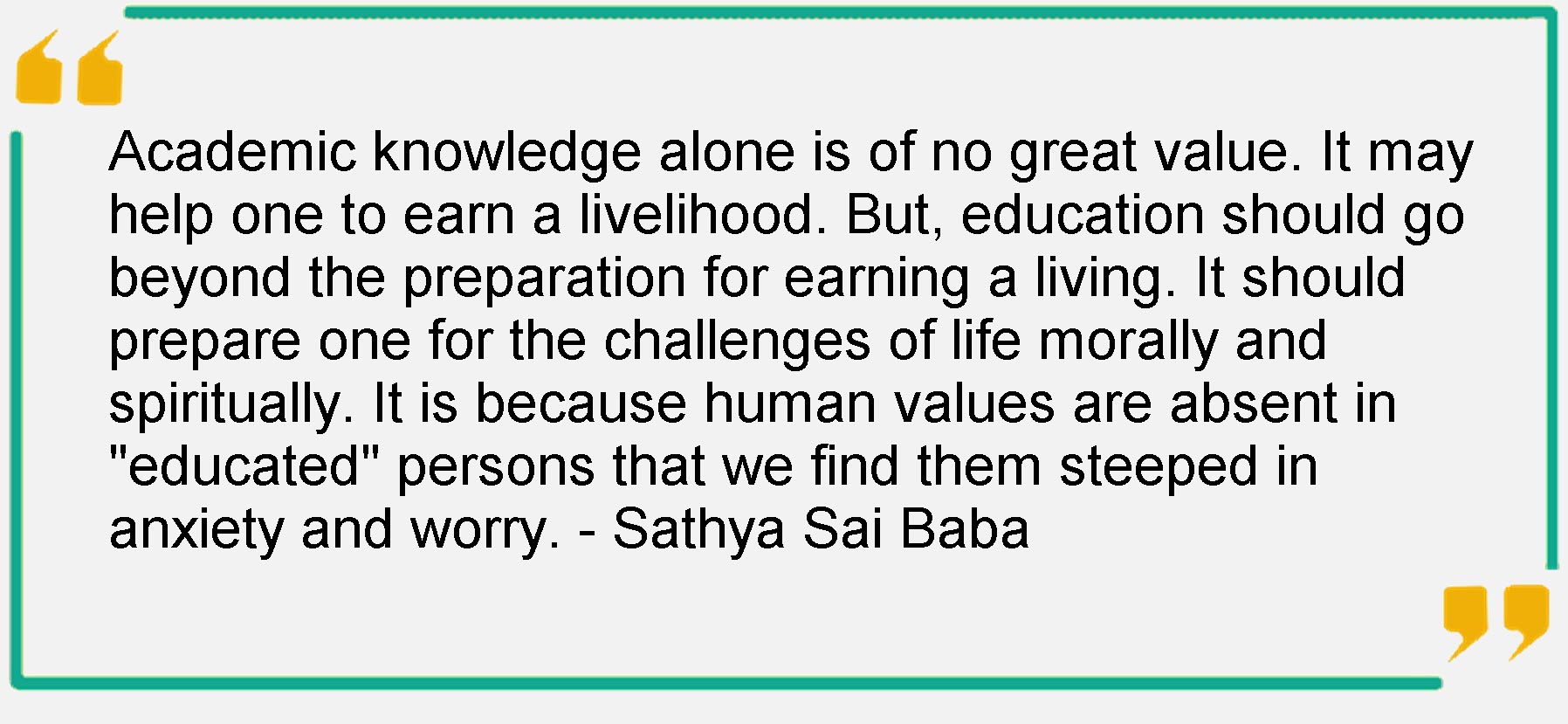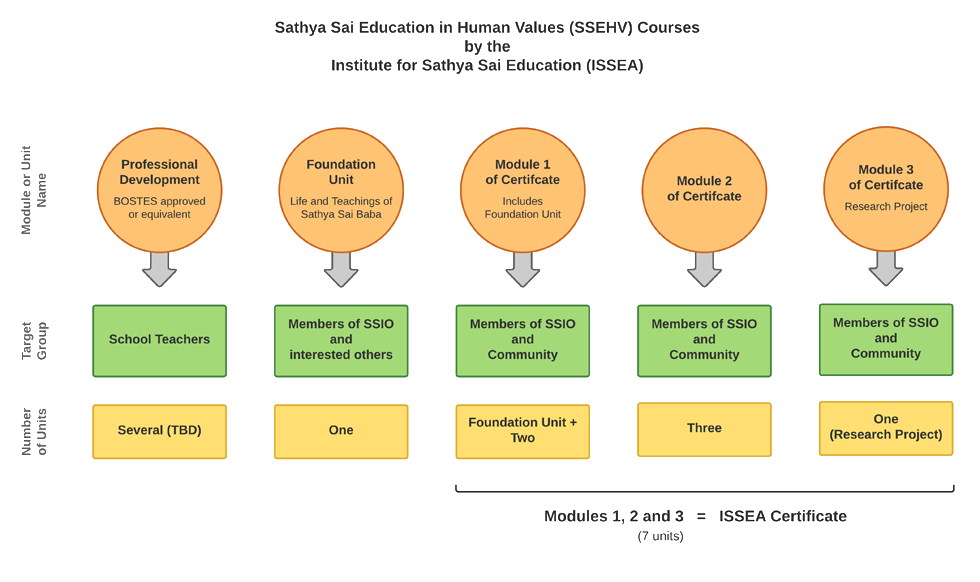

Sathya Sai Education in Human Values (SSEHV) is a universal, values-based teaching Programme for children of all cultures and faiths.
Sathya Sai EHV addresses the needs of our time by focusing on young people throughout the world and bringing out the human values that are innate within everyone. To enable young people to appreciate themselves and others, and to take greater responsibility for their actions and for the world around them.
The Programme helps to tackle issues such as bullying and anti-social behaviour and provide a foundation for better citizenship.

The ISSEA has trained facilitators in most states, who are available to offer tailor-made professional development for groups. For further information, please contact us.
This is the first of seven units to be presented in three modules by the ISSEA as the Certificate course in SSEHV: This certificate follows the guidelines of the education committee of the Sathya Sai World Foundation. This first foundation unit (part of module 1 of the certificate) is different from the rest of the certificate course, in that it has been developed to be taken by any member of the Sathya Sai International Organization (SSIO) or other interested people, irrespective of whether they wish to complete the rest of the course or not. The remaining units and modules will be undertaken only by those wanting to take SSEHV into the wider community in any number of ways. This first unit of the first module provides an in-depth look into the life and teachings of Sathya Sai Baba – something all members of the SSIO, as well as anyone else wanting to know more about Sathya Sai Baba, will want to do.
The unit is woven around the 30 episode series produced by Radio Sai for Sathya Sai Baba’s 85th Birthday. These can be viewed on the Radio Sai website, or be ordered from the Australian Publications Committee as a seven disc DVD set for your TV DVD player.
The unit is structured into nine lessons; in an STP-style facilitated discussion format, each lesson discussion lasting an hour and a half. It is suggested that group sizes should be between five and nine (seven is probably the ideal for interaction and learning). The group can decide where and when to meet, perhaps once a month in the evening or at a weekend, but some may prefer to meet every week, or to have several sessions over a weekend – just ensure adequate time to watch the required episodes of the video series.
For members of the SSIO in remote and isolated areas, and those that can’t get five people together, ISSEA is happy to offer this unit in either a self-paced way, with participants sending in assessment sheets at the end of each lesson to get the next one; or meeting with others using Skype. If you are interested to facilitate a group, please contact us to discuss options.
This course introduces the principles and teaching strategies with the aim of introducing SSEHV to the wider community. Participants are invited and facilitated to relate the concepts and techniques to their own lives, whether it be the school, other workplaces, the home or the general community. The course is offered in a blended learning mode, with 12 units in Module 1 and 12 in Module 2 delivered online, and two face-to-face meetings per module. It is anticipated that completion of these modules will take 18 months. This is followed by the Research Project, which generally takes 6 months to complete.
There are 3 units in each Module that cover introductory learning theory – people with relevant qualifications may be exempted from these. People who have completed other courses with the ISSEA may be similarly exempted from equivalent units.
For further information, please contact us
This is the final component of the SSEHV Certificate and generally takes 6 months to complete following Modules 1 and 2. Throughout these two modules, participants are invited to identify an issue of relevance to SSEHV in their workplaces or other aspects of their daily lives (for example school parents and citizens/friends associations). They are then guided to conduct a small-scale research investigation of their chosen topics.